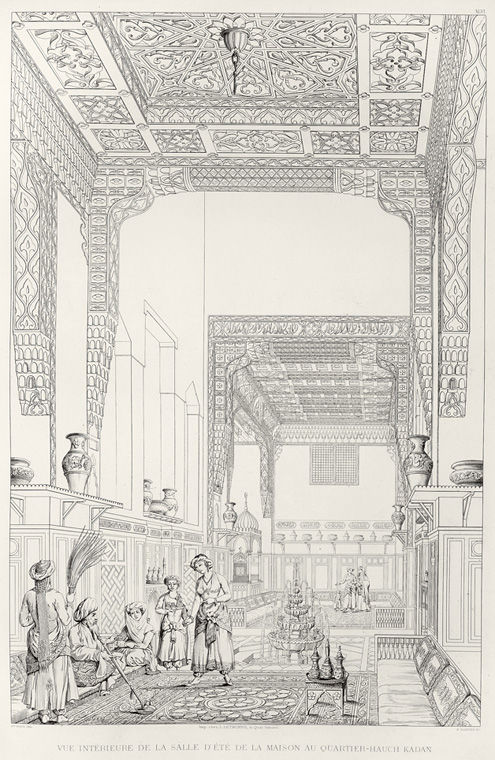Within the city walls, eighteenth-century Damascus was densely built (fig. 42). Palatial residences stood alongside more humble dwellings, bathhouses, mausoleums, schools, and places of worship, all within a grid of bustling market streets, narrow alleys, and cul-de-sacs. Courtyard houses, like the one that contained this room, traditionally accommodated an extended family, often consisting of three or more generations, as well as domestic servants. Narrow winding entryways to these domestic residences—preceded by plain exterior doors—obscured views of the interior from pedestrians on the busy streets outside. The entrance created a dramatic effect as guests traveled from the simple exterior through a dark and narrow passage, which opened onto an airy, lushly planted courtyard surrounded by living spaces. Windows and balconies often lined the interior walls of the home, rather than the street, enabling its residents to take full advantage of the calm and quiet courtyard within. Foreign travelers frequently recorded their observations in accounts that serve as valuable sources of information about these houses and their surroundings (fig. 43). One nineteenth-century European visitor aptly described an interior courtyard in the dense city as "a gold kernel in a husk of clay."

Fig. 43. Interior view of a reception chamber (qa'a). Plate XLVI in Architecture arabe; ou Monuments du Kaire, mesurés et dessinés, de 1818 à 1825, by Pascal Coste (1787–1879). Engraving; 52.5 x 37 cm. New York Public Library, New York
| Previous Section | Next Section |